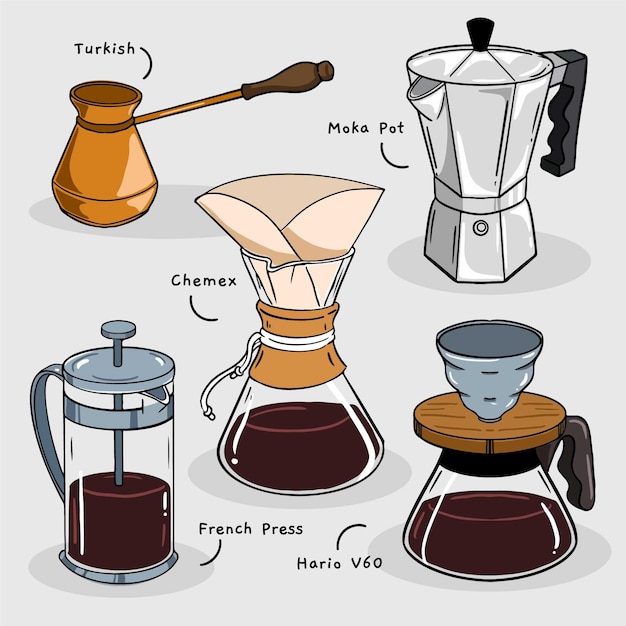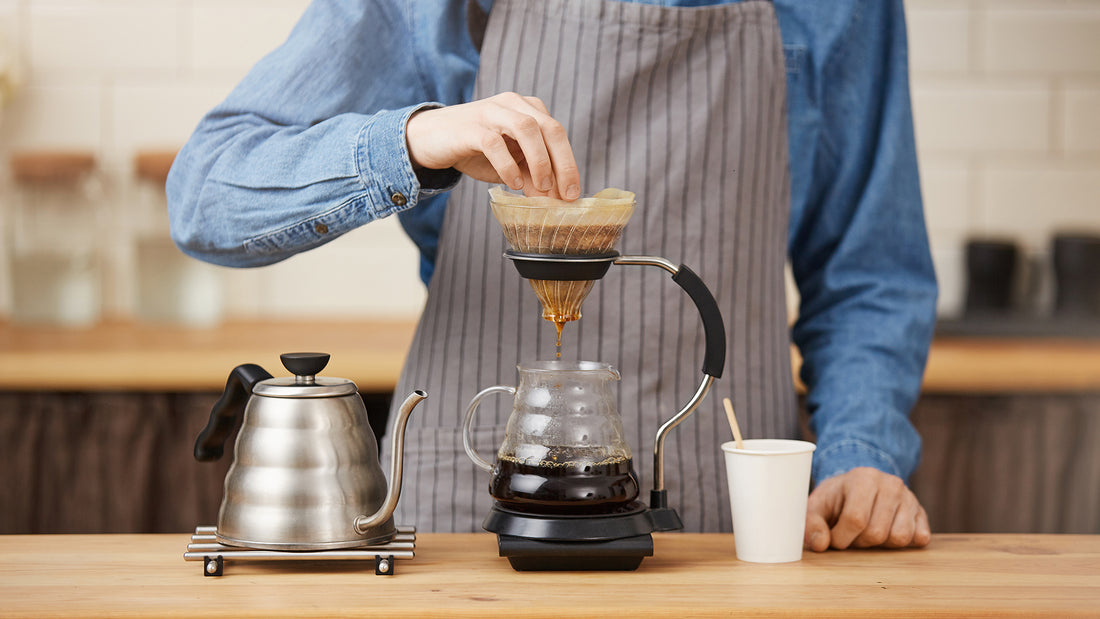The Ultimate Comparison of Popular Coffee Brewing Methods for Home Baristas
The Ultimate Comparison of Popular Coffee Brewing Methods for Home Baristas
Blog Article
Discovering the Art of Coffee Brewing: A Comprehensive Overview to Perfecting Your Cup
The art of coffee developing is a complex technique that combines scientific research with individual expression, where the option of beans, water high quality, and brewing methods converge to create a polished sensory experience. Recognizing the subtleties of different coffee beans, especially the distinctions between Arabica and Robusta, is essential for any connoisseur.
Recognizing Coffee Beans
To absolutely value the art of coffee brewing, one must initially recognize the fundamental aspect: coffee beans. These small seeds, typically stemmed from the Coffea plant, are vital in figuring out the flavor profile, fragrance, and general quality of the made beverage. Coffee beans primarily fall under two groups: Arabica and Robusta. Arabica beans, understood for their delicate tastes and higher acidity, are usually favored by connoisseurs. On the other hand, Robusta beans possess a stronger, extra bitter preference and greater high levels of caffeine content, making them ideal for coffee blends.

Additionally, the handling method-- whether washed, natural, or honey-- influences the beans' last taste. Understanding these aspects permits makers to pick the best beans that line up with their liked taste account, ultimately enhancing the coffee brewing experience. coffee brewing methods. This understanding is crucial for anyone aspiring to grasp the craft of brewing the best mug of coffee
Developing Approaches Clarified
Many enthusiasts find that the choice of brewing approach significantly impacts the final flavor and aroma of their coffee. Each method harnesses different extraction strategies, affecting the coffee's personality and splendor.
Drip developing, among the most prominent techniques, utilizes a device to drip warm water through ground coffee, producing a regular and tidy cup. French press, on the other hand, immerses coffee premises in warm water, enabling for a fuller body and more robust taste, as oils and great bits remain in the brew.
Pour-over developing uses a careful technique, where water is manually poured over coffee premises, enabling accurate control over extraction time and temperature level, leading to a brilliant and nuanced mug.
Coffee, a concentrated coffee made under stress, is understood for its strong taste and velvety texture, working as the base for different coffee drinks, consisting of coffees and lattes.
Essential Tools Needed
What equipment is crucial for making a fantastic mug of coffee? The structure of any effective coffee brewing procedure hinges on top quality devices customized to your favored method. To start with, a trusted coffee grinder is crucial; fresh ground beans considerably boost flavor and fragrance. Decide for a burr mill, which guarantees consistent bit dimension, crucial for ideal extraction.
Next, consider your developing device. Choices vary from drip coffee manufacturers and pour-over setups to French presses and coffee equipments. Each method provides unique taste accounts and brewing techniques, so select one that lines up with your preference choices.
A precise scale is likewise very useful, allowing you to measure coffee and water precisely, which is crucial for uniformity. In addition, a thermostat can aid monitor water temperature, as it directly influences extraction quality.
Mastering Water High Quality
The high quality of water used in brewing coffee plays a significant duty in establishing the last taste profile of the cup. Various variables add to water high quality, including mineral content, pH degree, and total pureness. Ideally, water should be devoid of pollutants and impurities, as these can detrimentally influence the taste of coffee.
Minerals, such as calcium and magnesium, enhance the removal of tastes from the coffee grounds, while keeping a well balanced pH level-- around 6.5 to More hints 7.5-- is essential for optimum extraction. Water that is too soft might result in under-extraction, resulting in weak or sour flavors, while overly tough water can produce a bitter or harsh mug.
For the best outcomes, filtered water is suggested, as it reduces the existence of chlorine and other unwanted substances often discovered in tap water. In addition, consider making use of water with an Overall Dissolved Solids (TDS) degree between 150-200 ppm, which is usually optimal for coffee developing. By grasping water top quality, you can lay a solid structure for achieving a continually outstanding mug of coffee, allowing the special characteristics of your selected beans to beam through.

Tips for Taste Improvement
Enhancing the flavor of your coffee can dramatically elevate your brewing experience and highlight the unique nuances of your picked beans. To achieve this, think about numerous key elements that affect preference.
Firstly, the grind size plays a critical role. A finer grind boosts removal, causing bolder flavors, while a coarser grind yields a milder cup. coffee brewing methods. Change your work according to your developing approach to achieve optimal results
Second of all, explore mixture time. Over-extraction can lead to bitterness, while under-extraction lead to a sour taste. Objective for a brew time that balances these extremes, normally in between 2 to 4 mins, relying on your approach.
In addition, temperature is an essential aspect. Brewing with water try these out that is as useful reference well hot can burn the coffee, while water that is as well amazing might stop working to draw out appropriate taste. The suitable temperature level variety is 195 ° F to 205 ° F(90 ° C to 96 ° C)
Final Thought) )))) In final thought, the art of coffee brewing is a diverse practice that requires a deep understanding of various elements, consisting of bean option, developing techniques, and water high quality. Mastery of essential equipment and focus to information in work size, brew time, and temperature level are critical for attaining ideal extraction. By incorporating these parts, coffee fanatics can raise their brewing techniques, causing a cup that not just satisfies personal choices yet likewise showcases the rich complexity of coffee flavors.
The art of coffee developing is a diverse discipline that combines scientific research with individual expression, where the choice of beans, water high quality, and developing techniques converge to create a refined sensory experience.To truly value the art of coffee brewing, one need to first comprehend the fundamental component: coffee beans. Brewing with water that is also warm can scorch the coffee, while water that is too trendy might stop working to draw out adequate flavor. In verdict, the art of coffee developing is a complex technique that needs a deep understanding of numerous aspects, including bean option, developing techniques, and water high quality. By incorporating these components, coffee enthusiasts can boost their developing strategies, resulting in a mug that not just satisfies individual choices yet likewise showcases the rich intricacy of coffee tastes.
Report this page